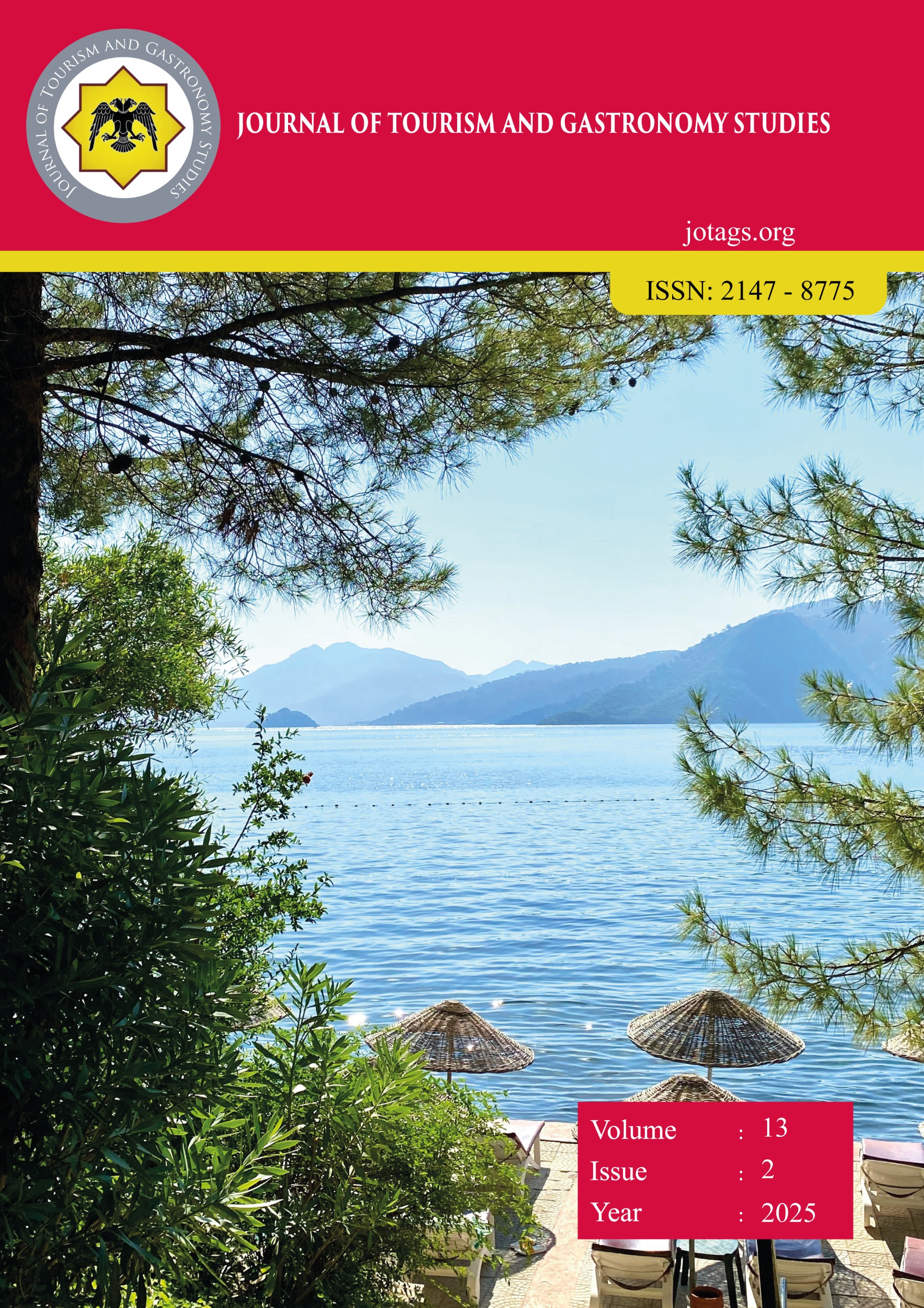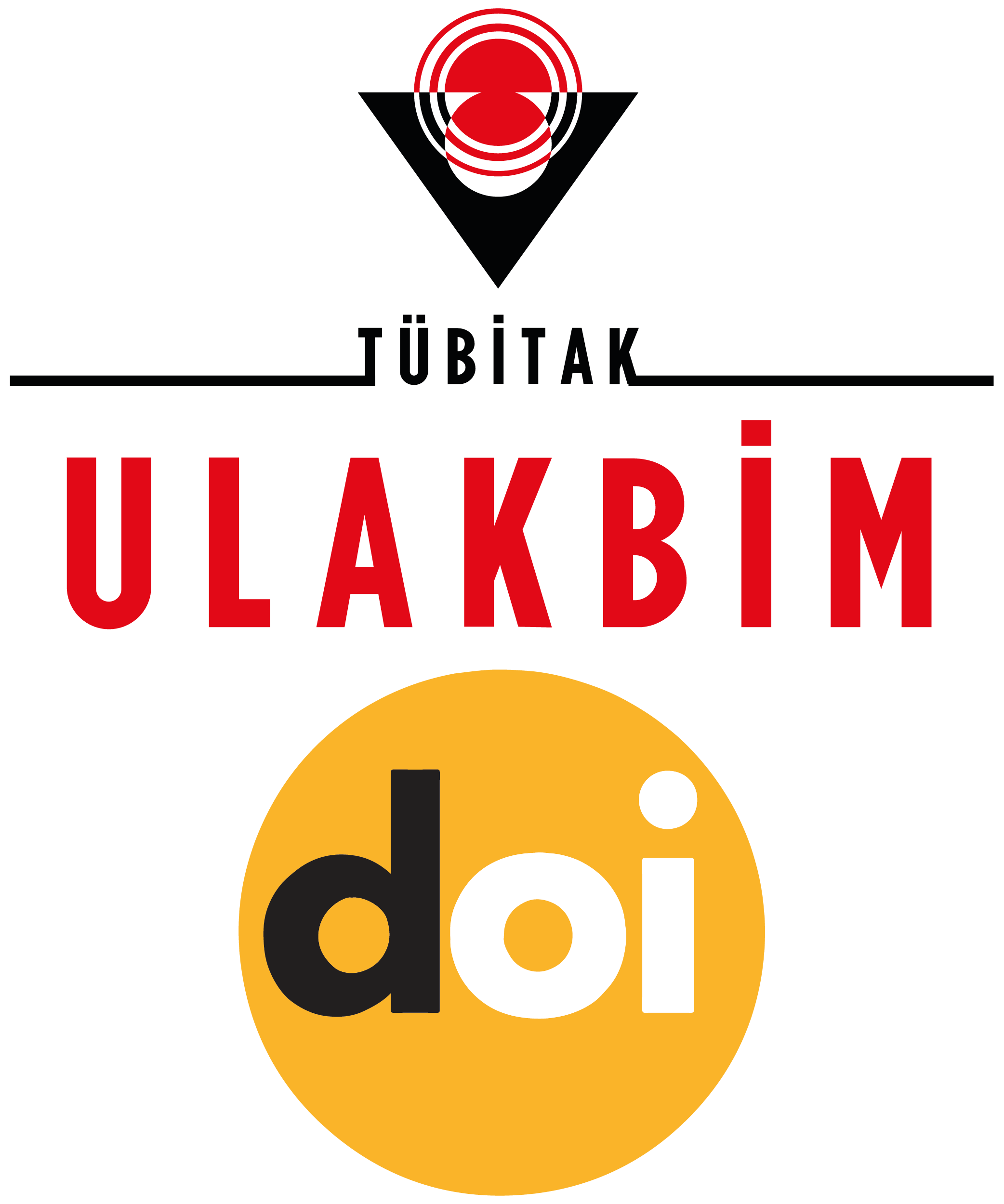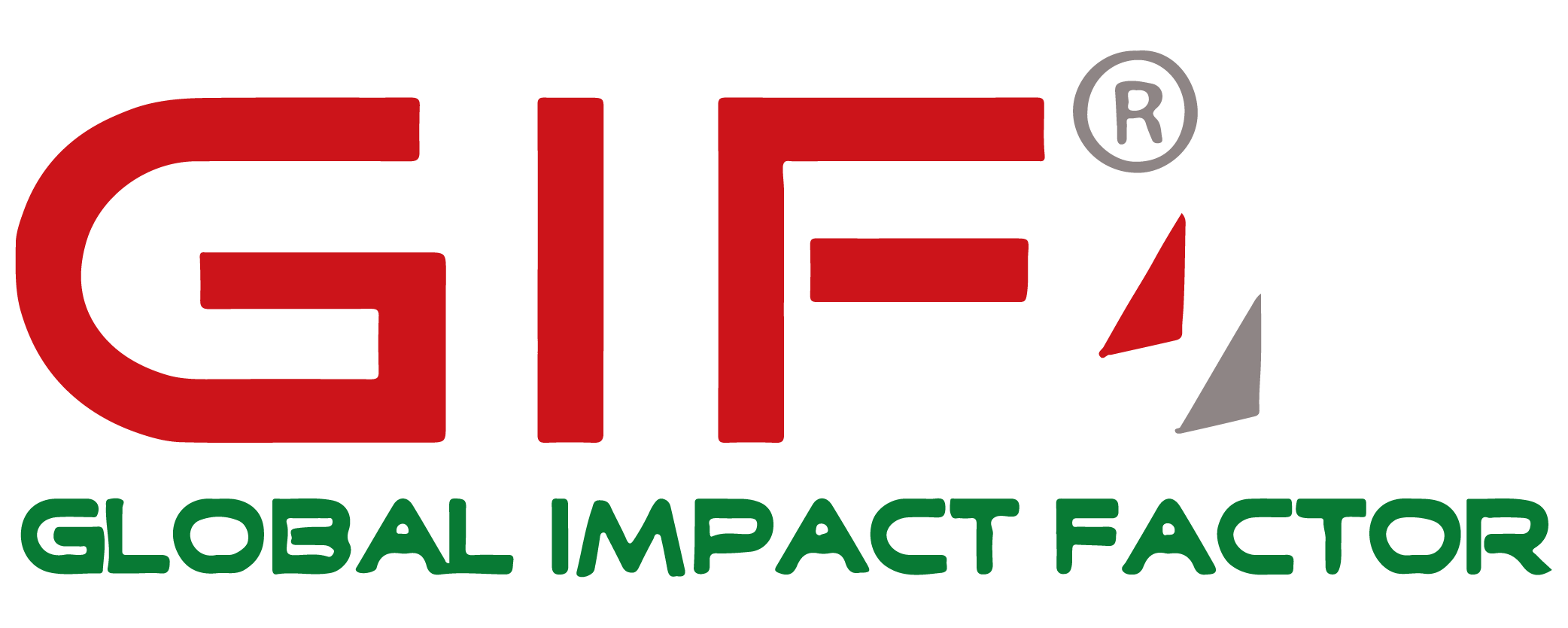Gastronomik Bir Değer Olarak Silivri Yoğurdu (Silivri Yogurt as a Gastronomic Value)
DOI:
https://doi.org/10.21325/jotags.2025.1637Keywords:
Gastronomic value, Yogurt, Silivri YogurtAbstract
The aim of this study is to identify the traditional production process of Silivri yogurt and emphasize its importance from a gastronomic perspective. In line with this aim, the semi-structured interview technique, a qualitative research method, was preferred. The study group consisted of 21 individuals, including yogurt producers and housewives aged 40 and over, who are considered cultural transmitters and reside in Silivri. Through face-to-face interviews, data were obtained and analyzed using content analysis to form main themes and sub-themes, supported by direct quotations. The traditional production stages of Silivri yogurt were documented, and additional questions were posed to participants according to the flow of the interview. Despite the questions posed, marketing and promotional issues were identified due to the increase in ready-made production of Silivri yogurt, changes in consumer preferences leading to a decrease in production, seasonal marketing, pricing, distribution channels, decrease in traditional production, and the need for accurate product promotion.
References
Aleman, R. (2023). Influences of yogurt with functional ingredients from various sources that help treat leaky gut on intestinal barrier dysfunction in caco-2 cells. Pharmaceuticals, 16(11), 1511. https://doi.org/10.3390/ph16111511
Altunışık, R., Coşkun, R., Bayraktaroğlu, S. & Yıldırım, E. (2007). Sosyal bilimlerde araştırma yöntemleri. Sakarya: Sakarya Yayıncılık.
Banerjee, U., Malida, R., Panda, R., Halder, T. & Roymahapatra, G. (2017). Variety of yogurt and its health aspects-a brief review, International Journal of Innovative Practice and Applied Research, 7(7), 56-66.
Bazhan, M., Keshavarz-Mohammadi, N., Hosseini, H. & Kalantari, N. (2017). Consumers’ awareness and perceptions regarding functional dairy products in Iran a qualitative research, British Food Journal, 119(2), 253-266.
Behare, P., Lule, VK. & Patil, P. (2016). Yogurt: Dietary Importance, (Edt: Benjamın Caballero, Paul M. Fınglas and Fıdel Toldra), Encyclopedıa of Food and Health içinde (612-616), The Boulevard, Langford Lane, Kidlington.
Bo, M. S., Lian, C. W., Joha, S. K. B., Mohammad, N. A. B., Jolly, I. E., & Selvan, D. T. (2022). Yogurt consumption and purchasing reasons among consumers in kuching, sarawak. Trends in Undergraduate Research, 5(2), g1-9. https://doi.org/10.33736/tur.4916.2022
Chandan, R. C., Gandhi, A. & Shah, N. P. (2017). Yogurt: Historical Background, Health Benefıts, and Global Trade, 3-29.
Chandan, R.C. & Kilara, A. (2013). Manufacturing Yogurt and Fermented Milks, Second Ed. Wiley-Blackwell, Oxford, UK.
Collins, N. & Lalor, F. (2024). Consumer behaviour towards milk and dairy yoghurt products carrying nutrition and health claims: a qualitative study, Nutrition & Food Science, 54(1), 56-70.
Ergan, K., Kızılırmak, İ. & Ergan, S. (2020). Gastronomik ürünlerin destinasyon seçimine olan etkisi: Edirne ili örneği, Balkan ve Yakın Doğu Sosyal Bilimler Dergisi, 6(3), 1-10.
Garcia-Gomez, B., Romero-Rodrigues, A., Vazquez-Oderiz, L., Munoz-Ferreiro, N. & Vazquez, M. (2019). Sensory quality and consumer acceptance of skim yoghurt produced with transglutaminase at pilot plant scale, International Journal of Dairy Technology, 72(3), 388-394.
Gómez-Gallego, C., Gueimonde, M. & Salminen, S. (2018). The role of yogurt in food-based dietary guidelines, Nutrition Reviews, 1(76), 29-39.
Huong, P. M. (2017). Finding important factors affecting local residents’ support for tourism development in ba be national park, vietnam. Forest Science and Technology, 13(3), 126-132. https://doi.org/10.1080/21580103.2017.1354337
Jaman, S., Islam, M. K., Sojib, M., Hasan, M. R., Khandakar, M., Bari, M. L., … & Rashid, M. U. (2022). Physicochemical characteristics, sensory profile, probiotic, and starter culture viability of synbiotic yogurt. Journal of Advanced Veterinary and Animal Research, 9(4), 694. https://doi.org/10.5455/javar.2022.i638
Lahmood, W. Y. & Jabir, D. M. (2020). Detection about fungal contamination in products milk in local and manufacturing yogurt and cheese in al-diwaniya city. International Journal of Research in Pharmaceutical Sciences, 11(4), 8042-8046. https://doi.org/10.26452/ijrps.v11i4.4758
Loveday, S. M., Sarkar, A. & Singh, H. (2013). Innovative yoghurts: novel processing technologies for ımproving acid milk gel texture. Trends in Food Science and Technology, 33(1), 5-20.
MEGEP, (2011). Gıda Teknolojisi-Yoğurt (541GI0019), Milli Eğitim Bakanlığı, Ankara.
Miles, M. B. & Huberman, A. M. (1994). Qualitative Data Analysis: An Expanded Sourcebook. İnternational Educational and Professional Publisher, London.
Muir, D. D., Tamime, A. Y. & Wszolek, M. (1999). Comparison of the sensory profiles of kefir, buttermilk and yogurt, International Journal of Dairy Technology, 52(4), 129-134.
Mwangi, G. & Mwalongo, J. (2023). Exploring the role of communication in enhancing the gastronomic tourism experience. Journal of Digital Marketing and Communication, 3(1), 28-35. https://doi.org/10.53623/jdmc.v3i1.248
Navarro, V., Serrano, G., Lasa, D., Aduriz, A. L. & Ayo, J. (2012). Cooking and Nutritional Science: Gastronomy goes Further, International Journal of Gastronomy and Food Science, 1(1), 37-45.
Niedbała, G., Jęczmyk, A., & Uglis, J. (2020). Linking of traditional food and tourism. The best pork of wielkopolska—culinary tourist trail: a case study. Sustainability, 12(13), 5344. https://doi.org/10.3390/su12135344
Ozturk, A. B., Özer, Ö., & Çalışkan, U. (2015). The relationship between local residents’ perceptions of tourism and their happiness: a case of kusadasi, turkey. Tourism Review, 70(3), 232-242. https://doi.org/10.1108/tr-09-2014-0053
Özer, E., Yalçın, S. & Çelik, T. (2022). The use of buffalo milk, kaymak and yogurt in traditional products of Afyonkarahisar cuisine, Journal of Tourism and Gastronomy Studies, 10(4), 3608-3625.
Pamungkaningtyas, F. H., Mariyatun, Kamil, R. Z., Setyawan, R. H., Hasan, P. N., Wiryohanjoyo, D. V., Nurfiani, S., Zulaichah, E., Utami, I. S., Utami, T. & Rahayu, E. S. (2018). Sensory evaluation of yogurt-like set and yogurt-like drink produced by ındigenous probiotic strains for market test, Indonesian Food and Nutrition Progress, 15(1), 1-10.
Pedersen, L. B. (2012). Creativity in Gastronomy-Unpublished Master Thesis, Copenhagen Business School, Department of Management, Copenhagen.
Piaia, M., Antoine, J-M., Mateos-Guardia, J-A., Leplingard, A. & Lenoir-Wijnkoop, I. (2003). Assessment of the benefits of live yogurt: methods and markers for in vivo studies of the physiological effects of yogurt cultures, Microbial Ecology in Health and Disease, 15(2-3), 79-87.
Samancı, Ö. (2020). Gastronomi: Disiplinler arası bir buluşma. Anatolia: Turizm Araştırmaları Dergisi, 31(1), 92-95.
Santich, B. (2004). The study of gastronomy and its relevance to hospitality education and training. International Journal of Hospitality Management, 23(1), 15-24.
Sertkaya Doğan, Ö. (2011). Silivri’de turizmin gelişmesi: sorunlar ve çözüm önerileri. Doğu Coğrafya Dergisi, 16(25), 89-102.
Strauss, A., & Corbin, J. (1990). Basics of Qualitative Research: Grounded Theory Procedures and Techniques. Newbury Park, CA: Sage.
Şireli, U. T. & Onaran, B. (2012). Yoğurt ve Yoğurdun İnsan Sağlığı Açısından Yararları, https://www.asuder.org.tr/wp-content/uploads/2016/03/yogurt.pdf
Temizkan, S. P., Cankül, D. & Kaya, S. (2021). Coğrafi işarete aday gastronomik bir değer: Eskişehir Simidi, Turizm Akademik Dergisi, 8 (2), 229-241.
Tremblay, A. Doyon, C. & Sanchez, M. (2015). Impact of yogurt on appetite control, energy balance, and body composition, Nutrition Reviews, 73(1), 23-27.
Türk Patent Enstitüsü, (2022). Silivri Yoğurdu, No: 1180-Mahreç İşareti, Silivri Belediyesi.
Verbeke, W. & Viaene, J. (1998). Consumer behaviour towards yoghurt in Belgium and Poland: a survey in two regions, British Food Journal, 100(4), 201-207.
Widjanarko, W., Lusiana, Y., Istiyanto, S. B., Novianti, W., & Evgenievna, L. N. (2024). Promoting local cuisine on social media: a strategic communication approach. Komunikator, 16(1), 53-66. https://doi.org/10.18196/jkm.20763
Wijaya, S. (2019). Indonesian food culture mapping: a starter contribution to promote indonesian culinary tourism. Journal of Ethnic Foods, 6(1). https://doi.org/10.1186/s42779-019-0009-3
Yazıcıoğlu, İ. Işın, A. & Yalçın, E. (2019). Coğrafi işaretli ürünlerin gastronomi turizmi kapsamında değerlendirilmesi: Akdeniz bölgesi örneği, Gastroia: Journal of Gastronomy and Travel Research, 3(4)-Özel Sayı, 861-871.
Yazıcıoğlu, İ., Işın, A. & Yalçın, E. (2019). Coğrafi işaretli ürünlerin gastronomi turizmi kapsamında değerlendirilmesi: Akdeniz bölgesi örneği. Gastroia: Journal of Gastronomy and Travel Research, 3(4), 861-871.
Yıldırım, A. & Şimşek, H. (2016). Sosyal Bilimlerde Nitel Araştırma Yöntemleri (11. Baskı.). Ankara: Seçkin Yayıncılık.
Downloads
Published
How to Cite
Issue
Section
License
Copyright (c) 2025 Journal of Tourism & Gastronomy Studies

This work is licensed under a Creative Commons Attribution-NonCommercial 4.0 International License.








